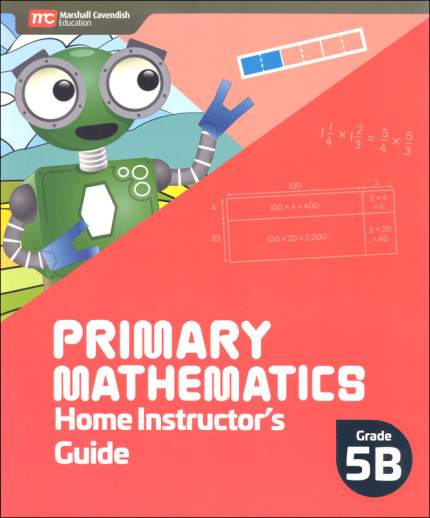We use cookies to make your experience better. To comply with the new e-Privacy directive, we need to ask for your consent to set the cookies. Learn more.
Primary Mathematics Home Instructor's Guide 5B (2022 Edition)
Intended to accompany the Student Book, the Home Instructor's Guide provides Student Book answers, select worked solutions, teaching ideas, and strategies to facilitate exploration, discussion, and student-centered learning. The front matter provides background on the program structure, lesson and concept development, and an overview of the Readiness-Engagement-Mastery model of learning.
Note: Soft cover. Includes digital component and answers to Student Book.
Concepts covered include: Numbers to 10 million (express in various forms; group into millions, hundreds of thousands, tens of thousands, thousands, hundreds, tens, and ones; count¬ by millions and thousands; compare and order whole numbers; write multi-digit numbers in expanded form). Use exponents to denote powers of 10. Convert fractions to decimals. Model decimals using thousandths. Convert decimals to fractions. Solve problems using order of operations. Multiply and divide using multi-digit numbers. Add and subtract unlike fractions and mixed numbers. Multiply proper fractions, improper fractions, mixed numbers, and whole numbers. Divide a whole number by a unit fraction. Use estimation and mental math to estimate sums, differences, products, and quotients. Round decimals. Form and graph ordered pairs of corresponding terms from two numerical patterns. Write and simplify numerical expressions. Write and solve equations. Graph linear equations. Identify and plot points in the first quadrant of the coordinate plane. Apply the properties of right, isosceles and equilateral triangles as well as parallelogram, rhombus, and trapezoid. Use measurement conversions of length, weight/mass, and capacity/volume in solving real-world problems. Estimate and measure volume in cubic units. Interpret line graphs and line plots to solve problems involving addition, subtraction, multiplication, and division of fractions. Consult or download the complete Scope and Sequence for a full report of covered topics and concepts.

